Introduction
In the arena of industrial fabrication, vacuum forming emerges as a pivotal technique, predominantly in the realm of plastic morphing and creation. This method, distinguished by its uncomplicated nature and efficacy, entails the thermal softening of a plastic lamina, subsequently sculpted over a template through the application of vacuum force.
The use of vacuum forming is so wide-ranging that it can be found in areas as diverse as car and plane making, as well as packaging and making household goods.

Vacuum forming provides an affordable way to make things that are both light and strong – often more cheaply than other methods do. This is important for industries that need new designs or prototypes fast, such as medical equipment makers (who also use it for bespoke packaging), people who pack products for shops – and even movie companies, which use vacuum forming to create props for films.
In this blog we’re going to explain how vacuum forming works so you understand it properly: including what goes on step-by-step; how lots of different things can be made this way – using examples from everyday life; why it matters in manufacturing today and how its use may change in future because industry needs vary all the time.

II. Delving into Vacuum Forming
Elucidation of Vacuum Forming process
Vacuum forming manifests as a procedure in plastic thermoforming wherein a thermoplastic sheet, upon reaching a malleable temperature conducive to shaping, is extended over or into a unifacial mold. The quintessence of this technique is the application of a vacuum, bridging the mold surface and the sheet, which in turn sculpts the plastic into the envisaged configuration. Post-molding, the product undergoes meticulous trimming to yield a functional entity.
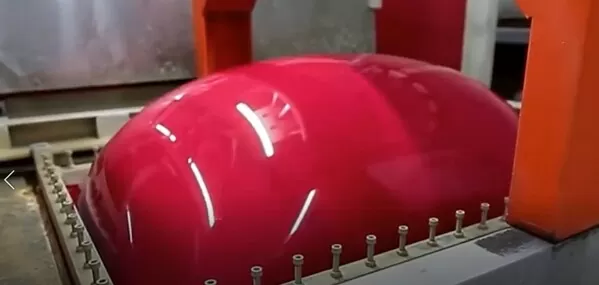
Historical Context and Evolutionary Trajectory of the Technique
Vacuum forming's genesis dates to the 1930s, heralding a paradigm shift in the manufacturing realm with the emergence of plastics. Initially, its utilitarian role was confined to crafting elementary shapes, predominantly for packaging purposes.
However, the evolution of plastic materials catalyzed the diversification of vacuum forming's applications. By the mid-20th century, it embraced more intricate roles, notably in fabricating components for the automotive and aerospace sectors. Over ensuing decades, strides in material science and automation have honed and augmented its utility, positioning vacuum forming as a multifaceted tool in contemporary manufacturing arsenals.

Fundamental Tenet of Vacuum Forming process
At its core, vacuum forming is anchored in the synergy of thermal dynamics and vacuum pressure. It commences with a flat plastic sheet, subjected to heat until it attains a supple, pliable state. This sheet is then draped over a specific mold. Subsequently, a vacuum pump evacuates the air ensconced between the plastic sheet and the mold. This evacuation engenders a vacuum that coerces the sheet to conform intimately to the mold, encapsulating its precise contours and intricacies.
Following a cooling phase where the plastic solidifies, it perpetuates the mold's form, culminating in a robust yet lightweight plastic component. This methodology underscores the delicate interplay of temperature regulation, pneumatic force, and precise timing, pivotal for the attainment of the desired vacuum formed products caliber.
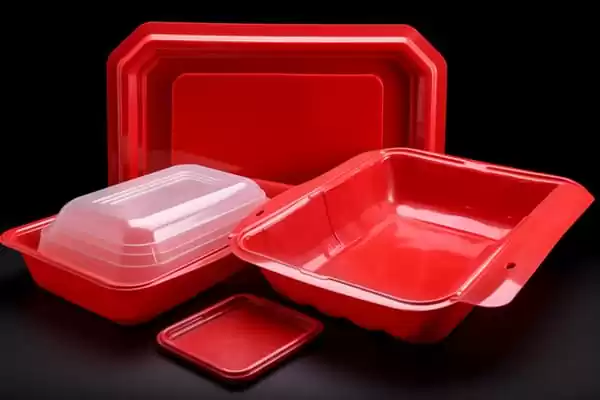
III. Elucidating the Vacuum Forming Technique
Warming of the Polymer Pane
Initiating the vacuum forming technique necessitates the election of an apt polymer material. Frequently employed polymers encompass acrylonitrile butadiene styrene (ABS), lauded for its robustness and enduring nature, and polyvinyl chloride (PVC), esteemed for its malleability and resistance to chemical interactions. Each polymer variant possesses a distinct fusion point, pivotal in dictating its behavior throughout the forming ordeal.
The augmentation of the polymer pane's temperature is a crucial phase. Ceramic or quartz emitters are conventionally utilized to uniformly escalate the sheet's heat. Progressive apparatuses might engage dual emitters, guaranteeing consistent thermal application on both facades of heated sheet and the pane. The objective is to elevate the polymer to a precise thermal point, rendering it supple and ductile, yet averting its liquefaction or decomposition.

Shaping Atop the Mould
Post-heating, the polymer sheet is expedited to the mould. Moulds bifurcate into two dominant kinds:
Male Mould: A protuberant mould where the polymer swathes the exterior. This approach is predominantly adopted for constructs with notable depth or elevation.
Female Mould: A concave mould where the polymer nestles inside. This mould is optimal for crafting detailed or intricate patterns on the surface of the shaped polymer. To attain the envisaged configuration, methodologies like plug assist are enacted. Plug assist entails an auxiliary component to pre-extend the polymer prior to its engagement with the primary mould, assuring a uniform distribution wall thickness of material, especially in deeper or multifaceted moulds.
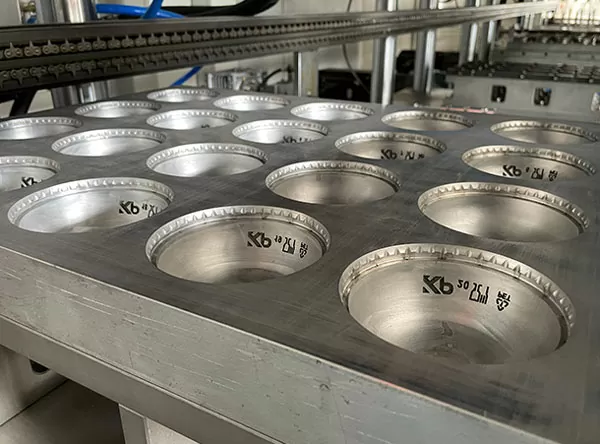
Enacting the Vacuum forming process
At this juncture, the vacuum pump assumes a critical role. It forges a vacuum by evacuating the atmosphere from the interstice between the thermally escalated polymer sheet and the mould. This vacuum exertion coerces the polymer to adhere precisely to the mould's silhouette. In unadulterated vacuum forming, this vacuum stands as the solitary propelling force. Conversely, pressure forming incorporates supplementary atmospheric pressure on the polymer's reverse, urging the substance into the mould for more refined detailing and sharper delineation.

Cooling and Disengagement
Once the polymer has been shaped in the mold, it must be cooled. Often, chilled air or water is used for this purpose, causing the polymer to harden into its new desired shape. When the cooling process is complete, the vacuum can be turned off and the vacuum-formed object removed from the mold. At this point, if further steps are required – such as trimming or finishing – they can be carried out on the newly formed item so that it meets both the required specifications for its particular use and any aesthetic requirements too.
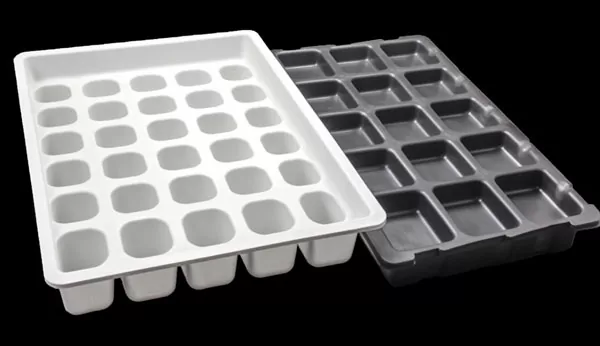
IV. Exploiting Vacuum Forming's Multifaceted Capabilities
Used across various industries for its versatility and cost effective vacuum forming, vacuum forming is an important technique. It can shape many different types of plastic into complex forms – which is why it’s popular in so many kinds of manufacturing.
Spectrum of Vacuum-Formed Commodities
The array of commodities birthed from vacuum forming is vast and varied. Here's a glimpse at some exemplars:
Culinary Storage Apparatus:
One could argue that culinary storage apparatus through vacuum forming, this one is seen everywhere. It can be made from materials like PVC and is both strong and safe, serving both domestic and commercial spheres.
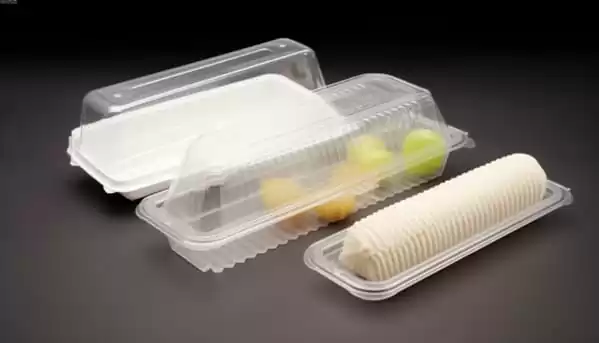
Automobile Components:
Used in the production of items such as dashboards, door panels, and larger parts like bumpers, vacuum forming is praised for its ability to create lightweight yet strong elements – all done with careful design considerations.

Medical Apparatus:
Creating sterile, one-time use tools and durable cases for medical equipment are important uses for vacuum forming in medicine. In this field, making things exactly right – and without any mistakes – is very important.

Packaging Solutions:
Vacuum forming plays a crucial role in packaging – from blister packs to clamshell containers. One reason for this is its ability to cater for such a wide range of sizes and shapes; designers have almost unlimited freedom.
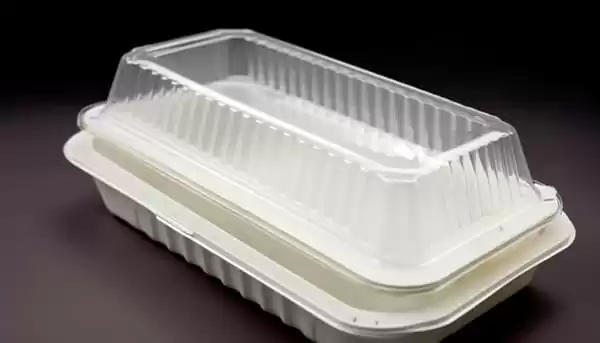
Retail Exhibit Structures:
In retail settings, you will frequently see custom-made display stands and signage created using vacuum forming. People like using this technique because it produces items that can withstand a lot of wear and tear while still being easy to shape exactly as required—plus, of course, incorporating branding.
Industries Reaping the Benefits of Vacuum Forming process
Numerous sectors have grown to depend on vacuum forming for various applications:
Food Packaging Sector:
Vacuum forming is instrumental in the food industry, ensuring edibles' safety and prolonging shelf life with its packaging solutions.
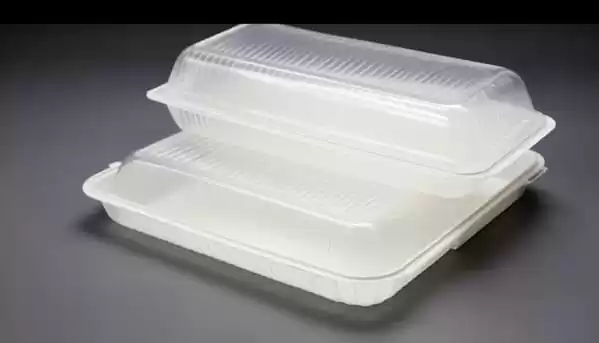
Automotive Realm:
The quest for lightweight and economical parts positions vacuum forming as a favored process in numerous automotive undertakings.
Medical and Pharmaceutical Fields:
For the production of sterile, disposable items and sturdy equipment casings, vacuum forming is the method of choice, owing to its precision and safe material usage.
Consumer Electronics:
In the realm of consumer electronics, vacuum forming is utilized to forge casings and parts that meld aesthetic allure with functional design.

Aerospace Industry:
This sector employs vacuum forming for crafting lightweight components that adhere to stringent industry standards.
The ubiquitous adoption of vacuum forming stands as a testament to its versatility, efficiency, and the caliber of products it can generate. Spanning from quotidian items to specialized industrial components, vacuum forming exerts a profound influence on a multitude of manufacturing aspects.
V. Advantages of Vacuum Forming
Vacuum forming is not only a popular manufacturing process due to its versatility but also because of the distinct advantages it offers over other forms of plastic shaping techniques. These benefits make it an attractive option for a wide array of applications, from prototype development to full-scale production.
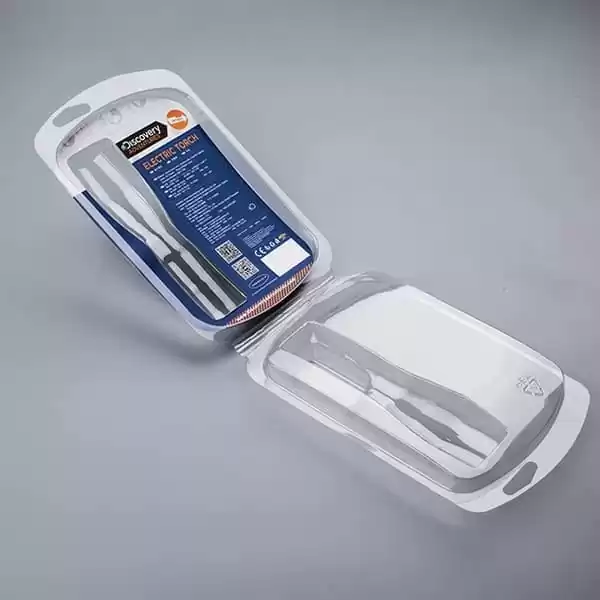
Cost-Effectiveness and Efficiency
One of the most significant advantages of vacuum forming is its cost-effectiveness, particularly for small-scale production runs. The reasons for this include:
Lower Tooling Costs:
Vacuum forming usually requires cheaper molds than methods like injection molding, which makes a difference for small runs or customized products –– because making molds can otherwise get so pricey that it stops production.
Reduced Waste:
Vacuum forming usually generates less waste material, as any surplus from the items produced can often be trimmed off and reused, cutting costs and lessening environmental harm.

Quick Setup and Turnaround:
The vacuum forming process is so simple that it can be set up quickly, meaning products can be made fast – useful when you’re working to a tight deadline or need to produce items quickly because there’s lots of demand.
Design Flexibility
Vacuum forming offers significant flexibility in design, which is advantageous for custom and innovative product development:
Material Versatility:
Manufacturers are able to utilize a variety of plastic materials with this process, including ones with various thicknesses and properties, in order to select the one that is best suited for their particular application.

Complex Shapes and Details:
With vacuum forming, it is possible to create components that have complex patterns and delicate features. The technique’s adaptability in terms of mold types (both male and female) also means wide-ranging design possibilities and choice in how finished products look.
Comparison with Other Manufacturing Processes
When compared to other plastic manufacturing processes like injection moulding, vacuum forming stands out in several ways:

Lower Initial Investment:
If a business is small-scale or only needs to produce items for a short time, it may find injection moulding too expensive because of the large investment needed upfront for machinery and making moulds.
Simpler Tooling Requirements:
The molds used in vacuum forming are often made from less expensive materials like wood or aluminum, whereas injection moulding usually requires more durable and costly steel molds.
Greater Design Adaptability:
Changing designs in vacuum forming can often be achieved with minimal adjustments to the mold or process, while in injection moulding, even small design changes can necessitate significant modifications to the mold.

To sum up, vacuum forming is a cost-effective option that offers design freedom and works well for various production volumes. Being able to make different items quickly and to a high standard means lots of sectors prefer it over rival manufacturing systems – sometimes even over injection moulding for some jobs.
VI. Specialized Equipment and Materials in Vacuum Forming
Knowing the equipment and materials used in vacuum forming is crucial for understanding the power and flexibility of this technique. Specialized tools play a big role in how well vacuum forming works—and what you can do with it!

Vacuum Forming Machines and Tools
The vacuum forming machine is at the heart of the vacuum forming process. These machines are available in many different sizes and levels of complexity to suit various production requirements.
Key Components: A standard vacuum forming machine consists of a framework for holding the plastic sheet; heaters, which make the sheet soft and pliable; and a vacuum system, which shapes the sheet over the mould.
Mechanical Trim Press: Found on all machines used for post-forming operations at vacuum forming temperature. It trims any excess material off the part after it has been formed. This ensures that there will be consistency as well as precision within your final product!
Vacuum Reservoir: Guarantees steady pressure throughout your cycle time so there is no fluctuation from start to finish – something very important if you’re looking for detailed work with accuracy
Advanced Features: Some vacuum forming machines incorporate advanced technologies like photo electric beams for precise control over sheet level and vent holes in the mold to facilitate air evacuation, enhancing the quality of the formed product.

Different Plastic Polymers and Their Properties
The selection of plastic material plays a crucial role in vacuum forming because each type has its own special properties that can influence the outcome.
Acrylonitrile Butadiene Styrene (ABS) is tough, can take hard knocks and is therefore found in motor vehicles, goods for the home (like box fans), and white goods such as washing machines.

Polyvinyl Chloride (PVC) does not react with chemicals very much at all so it is great when making packaging materials to hold things like bleach bottles; medical devices need to be made from this stuff too sometimes for the same reason.
Polycarbonate: Valued for its high strength and transparency, polycarbonate is used in applications requiring clarity and toughness, like protective covers and panels.
Polyethylene: Known for its flexibility and low cost, polyethylene is often used in containers, tubing, and various household items.
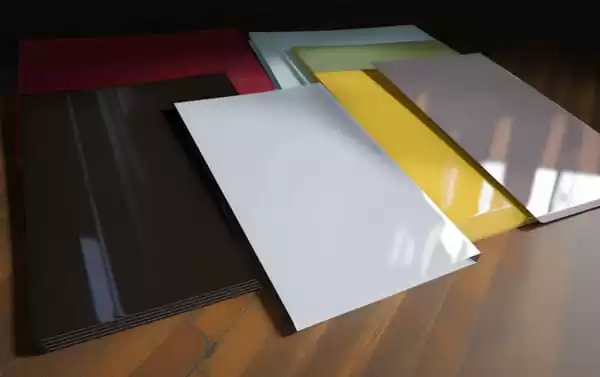
Advanced Technologies in Vacuum Forming
The integration of advanced technologies has significantly enhanced the capabilities of vacuum forming.
Automated Heating Systems: These systems ensure consistent heat distribution across the plastic sheet for better quality forming by controlling heating automatically.
Computer-Aided Design (CAD) for Molds: Creating extremely precise and intricate vacuum forming tools designs is possible – and opens up more options for vacuum forming – thanks to computer-aided design technology.
Control Systems: Presently, advanced control systems are found in many vacuum forming machines. They keep track of important factors during the process such as temperature and vacuum pressure – making necessary corrections as needed. This results in improved quality control along with increased efficiency.

Conclusion
In the world of modern manufacturing, vacuum forming is a standout example of clever techniques that can be used to create just about anything. This discussion has explored cheap ways to do vacuum forming by looking at what it’s all about, breaking down the many steps involved and showing how important special equipment and materials are if you want to get good results. When you put all these things together, they prove beyond doubt that this technique ticks boxes for being simple, efficient and flexible – which is why no one who works in fabrication can afford to ignore it.
Vacuum forming is important because it can be used in many different areas. Whether you need custom packaging, parts for cars and medical equipment, or just something people use every day – straight vacuum forming is a cheap, flexible way to turn ideas into things.

And it’s not just good for basic shapes: this technique works well with lots of types of plastic, can handle fine art work on products and even makes items with curves and hollows look fancy too! Its proficiency in managing assorted plastic substances and accommodating detailed artistic designs and complex contours further bolsters its allure to fabricators and designers.
Whether you’re an experienced professional in manufacturing or someone just starting out and exploring different production methods, we encourage you to consider vacuum forming for your projects. It combines inexpensive tools with quick prototype creation – and the ability to make high-quality goods. That makes it a great choice whether you’re working on something small scale or looking at producing things in large quantities.
In a time where customization, speed, and efficiency are key, vacuum forming stands out as a technique that not only meets these demands but also evolves constantly with technological advancements—meaning it will remain useful and relevant for years to come.




